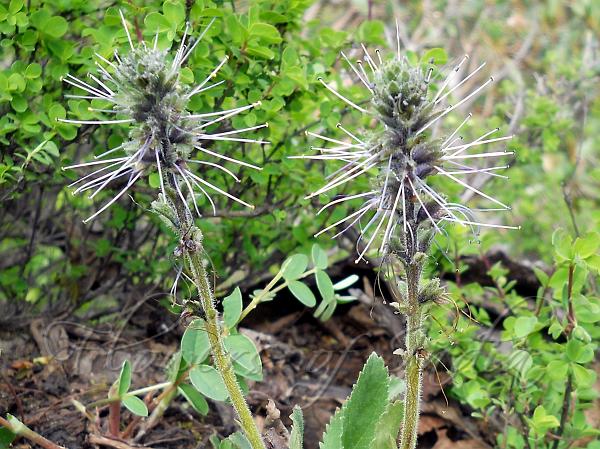|
| Bitter-Root |
|

|

|
|
|
|
Photo: |
Botanical name: Picrorhiza kurroa Family: Plantaginaceae (Isabgol family)
Synonyms: Picrorhiza kurrooa
Synonyms: Picrorhiza kurrooa
Bitter-Root is a small herb with spoon-shaped, 5-15 cm
long leaves, almost all at the base. Leaves are coarsely toothed,
narrowed to a winged stalk. Rhizomes of the plant are 15-25 cm long and
woody. Flowers are small, pale or purplish blue, borne in cylindric
spikes, spikes borne on almost leafless erect stems. Flowers about 8
mm, 5-lobed to the middle, and with much long stamens. Fruits are 1.3
cm long. Flowering stems are usually longer than the leaves. Bitter-Root is
found in the Himalayas, from Pakistan to Uttarakhand, at altitudes of
3300-4300 m. Flowering: June-August.
Medicinal uses:  It is a well-known herb in the Ayurveda and has been used to treat
disorders of the liver and upper respiratory tract, chronic diarrhea,
and scorpion sting.
It is a well-known herb in the Ayurveda and has been used to treat
disorders of the liver and upper respiratory tract, chronic diarrhea,
and scorpion sting.
 It is a well-known herb in the Ayurveda and has been used to treat
disorders of the liver and upper respiratory tract, chronic diarrhea,
and scorpion sting.
It is a well-known herb in the Ayurveda and has been used to treat
disorders of the liver and upper respiratory tract, chronic diarrhea,
and scorpion sting. | Identification credit: Suresh Rana | Photographed in Chamoli distt., Uttarakhand & Paddar Valley, Jammu & Kashmir. |
• Is this flower misidentified? If yes,